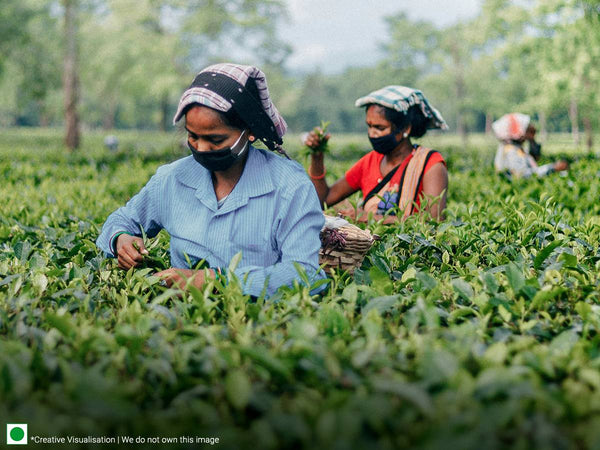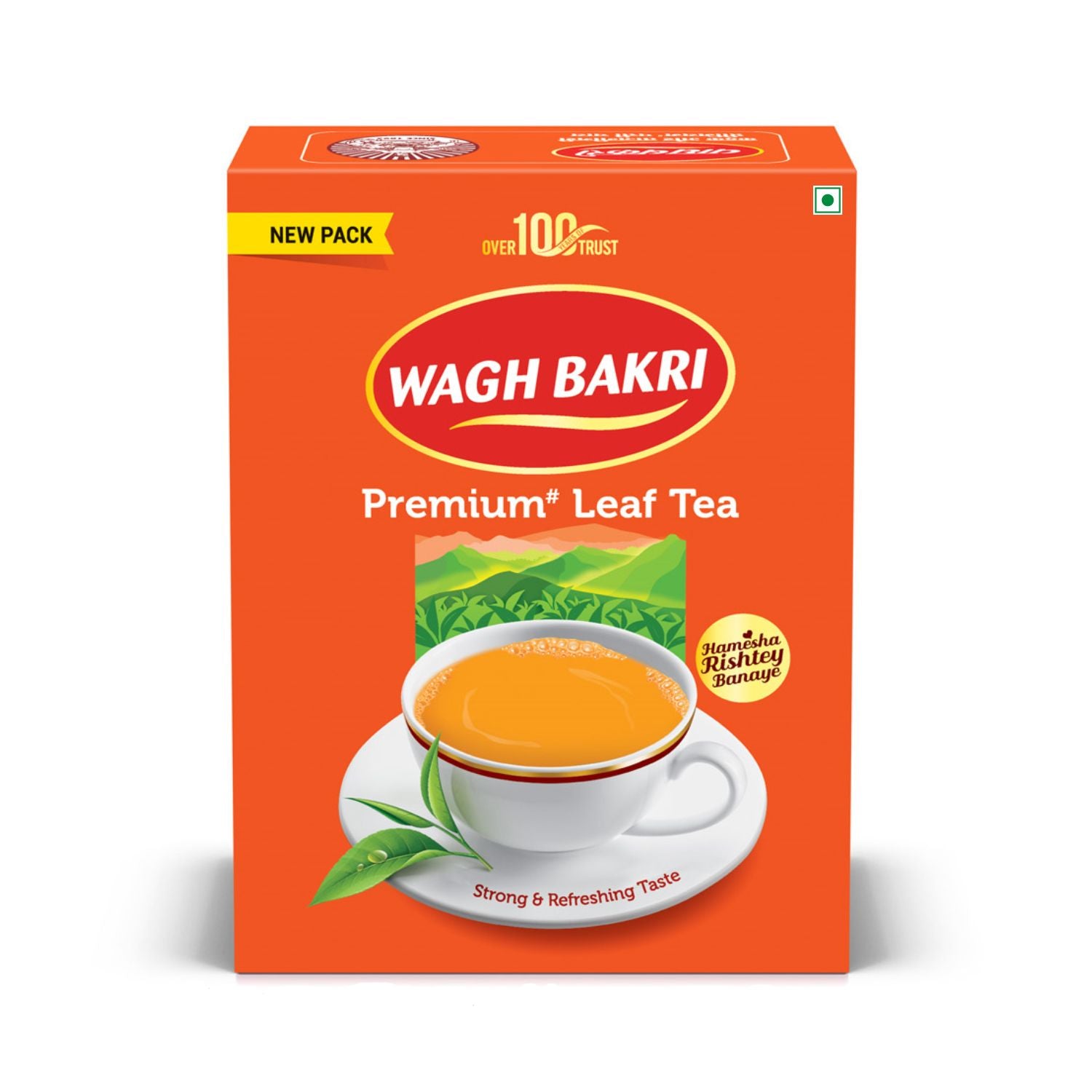
India and chai are synonymous with each other. You cannot think of one without the other. Chai is not just a drink in India, it is a way of life. It is a ritual, a tradition, a comfort and a connection. It is the first thing that many Indians wake up to. It is the companion of every conversation, every celebration and every moment of solitude. It is the fuel of every dream, every struggle and every success.
Chai is the love of India and India is the love of chai. This love story has been brewing for centuries and it is still going strong, with Wagh Bakri Tea being a part of the most exciting phase of it. Let’s explore how this bond came to be, how it evolved and how it continues to thrive in the present.
Table of Contents
- The history of tea in India
- The cultural significance of Chai
- The diversity of tea in India
- The contemporary love for chai across generations
- Concluding thoughts…
- FAQs
The history of tea in India
Tea was introduced to India by the British in the 19th century, who wanted to break the monopoly of China on the tea trade. They planted tea estates in the northeastern regions of India, especially in Assam and Darjeeling and started exporting tea to Britain and other countries.
However, tea did not become popular among the masses in India until the early 20th century, when the Indian Tea Association began to promote it as a cheap and healthy drink for the working class. They set up tea stalls along railway stations, factories and offices and encouraged vendors to sell tea with milk, sugar and spices. This was the birth of the Indian chai or masala chai, as we know it today.

The Indian chai soon became a hit among the people, who loved its rich and aromatic flavour and its soothing and stimulating effect. It also became a symbol of resistance against British colonial rule, as many Indians preferred to drink their version of tea, rather than the plain and expensive tea of the British. Chai then became a part of the Indian identity and a source of pride. From purchasing loose tea in paper bags from grocery shops to being able to buy tea online, India has come a long way in its relationship with chai.
The cultural significance of Chai
Chai is more than just a beverage in India, it is a cultural phenomenon. It is ingrained in the social fabric of the country and it reflects the diversity and unity of its people. Chai is the common thread that connects people from different regions, religions, languages and backgrounds. It is the medium of communication, the bridge of understanding and the bond of friendship, shared over a cup of chai or a tall glass of lemon ice tea.
Chai is also the expression of hospitality, generosity and warmth in India. It is the first thing that is offered to any guest or visitor. It is a sign of respect, gratitude and goodwill. No matter how rich or poor, how busy or free, how happy or sad, every Indian has time for a cup of chai.
Chai is also the source of comfort, solace and joy in India. It is the companion of every mood, the supporter of every endeavour and the celebrator of every achievement. The Indian prime minister often invokes his chai-selling days at the Vadnagar railway station to talk about how anyone from the humblest backgrounds can rise with hard work and determination. He also initiated the Chai Pe Charcha campaign to engage with the people of India over a cup of chai and discuss various issues and policies before the 2012 General Elections in the country.
In fact, tea is so synonymous with India that even the founder of Microsoft, during his visit to India in 2024, praised the creativity and ingenuity of the Indians while sipping on a glass of cutting chai at a tapri.
The diversity of tea in India
India has a rich variety of tea types and brewing styles, reflecting its diverse geography, climate and culture. Each region has its speciality and preference and each tea has its taste and character. Some of the unique ways to enjoy chai in India are:
Kulhad chai
This is the chai that is served in a clay cup or kulhad, which adds an earthy flavour and aroma to the tea. It is popular in northern and central India, especially in Delhi, Rajasthan and Uttar Pradesh.
Irani chai
This is the chai that is made with condensed milk, which makes it thick, creamy and sweet. It is popular in southern India, especially in Hyderabad, where it is served with biscuits, cakes or samosas.
Cutting chai
This is the chai that is served in small glasses or cutting, which are half-filled with tea. It is popular in western India, especially in Mumbai, where it is consumed in small doses throughout the day.
Butter tea
This is the chai that is made with butter, salt and yak milk, which makes it rich, salty and frothy. It is popular in northern India, especially in Ladakh, where it is consumed to keep warm and hydrated in the cold and dry climate.
Noon chai
This is an interesting one, as this tea looks like a pink milkshake, but it's a mildly salty brew popular in Kashmir. Noon in Kashmiri means salt, hence this is Salted Tea.
The contemporary love for chai
The love story between India and Chai is still going strong and it is evolving with the times. Chai is not only a part of the tradition, but also of modernity. And yes, it goes much beyond the quintessential green tea bags. Chai is adapting to the changing tastes, preferences and lifestyles of the people and it is offering new and exciting ways to enjoy it.
Chai is becoming more diverse, innovative and creative. It is experimenting with new flavours, ingredients and combinations. It caters to different needs, preferences and occasions. It may offer different benefits, such as health, wellness and energy (Balance consumption of the tea may offer different benefits). It is also becoming more accessible, convenient and affordable. Chai is available in various forms, such as masala tea bags, tea leaves, tea powders, tea concentrates and ready-to-drink beverages.
Chai is also becoming more social, interactive and engaging. It is creating new spaces, platforms and communities for people to connect, share and learn. It is inspiring new trends, movements and initiatives for people to express, create and contribute. It is also generating new stories, experiences and memories for people to enjoy, cherish and celebrate. Chai is not only a drink, but also a culture, a lifestyle and a passion.
To conclude…
India and chai have a love story that is brewing through generations and it is still as strong and as sweet as ever. Chai is the drink that connects, comforts and celebrates the people of India and it is the drink that reflects the diversity, unity and identity of India.
Wagh Bakri tea is the tea that understands and respects this love story and it is the tea that brings you the best of it. Wagh Bakri tea offers you a diverse and delicious range of teas that suit your every mood, need and occasion. And Wagh Bakri chai is the tea that celebrates the love for chai and the love for India. Because we know, Chai is the essence of India and India is the essence of chai.
FAQs
Who invented tea first?
Tea was first discovered in China by Emperor Shen Nong in 2373 BCE, according to legend.
Which is the most expensive tea from Darjeeling?
The most expensive tea from Darjeeling is the Silver Tips Imperial tea of Makaibari Tea Estate.
What are the spices in Masala chai?
Masala chai is a spiced tea that usually contains cardamom, cinnamon, cloves, ginger and black pepper. Other spices such as nutmeg or fennel may also be added.
Is bubble tea real tea?
Yes, bubble tea is a tea-based drink. It's made by blending tea with milk, fruit and fruit juices and then adding tapioca pearls and stirring vigorously.
How much time does it take to make tea?
The time to make tea depends on the type and quality of the tea leaves, the water temperature and personal preference. Generally, green tea takes 1 to 2 minutes, black tea takes 3 to 5 minutes and herbal, oolong and white tea takes 3 to 7 minutes.












